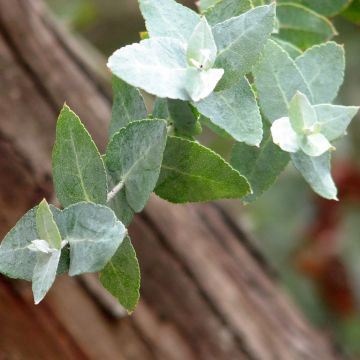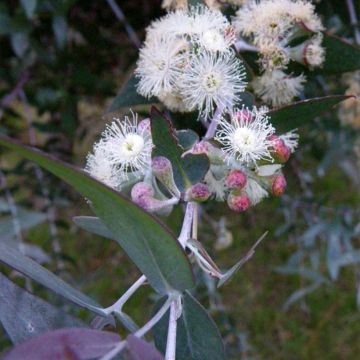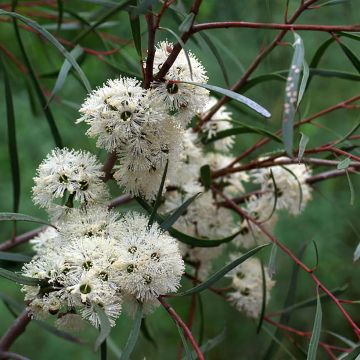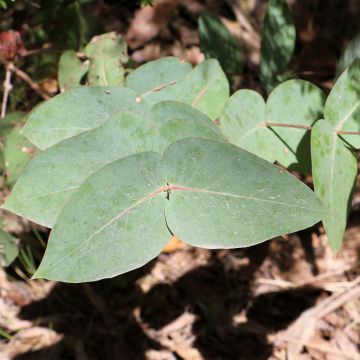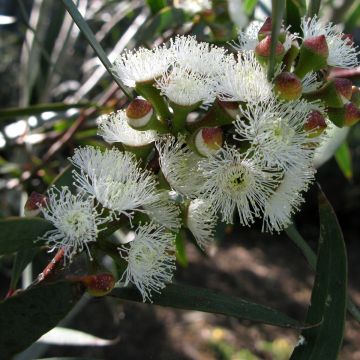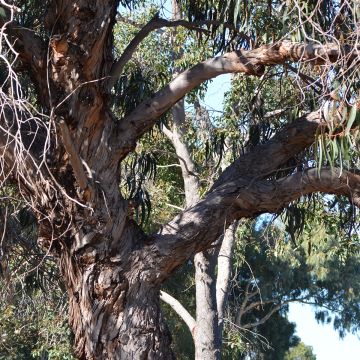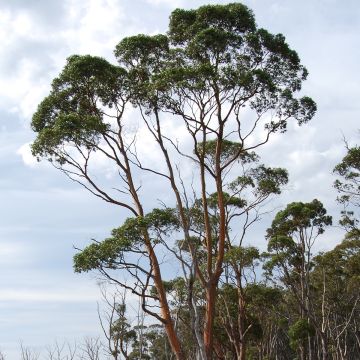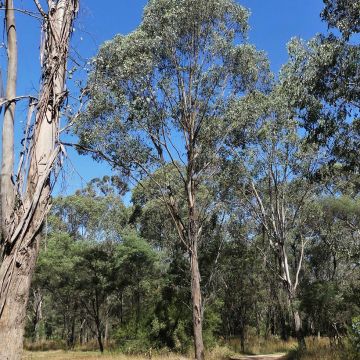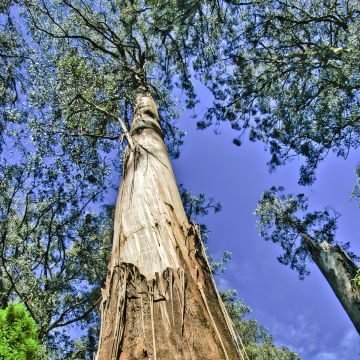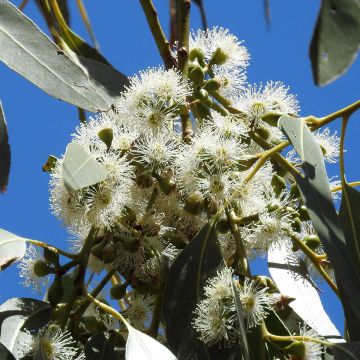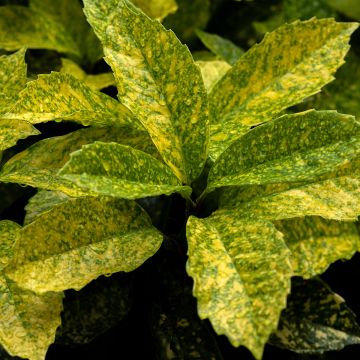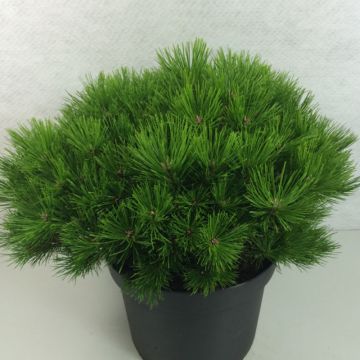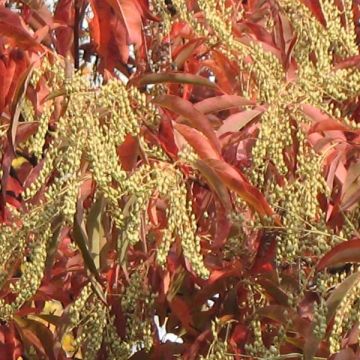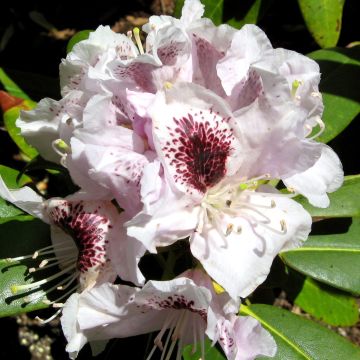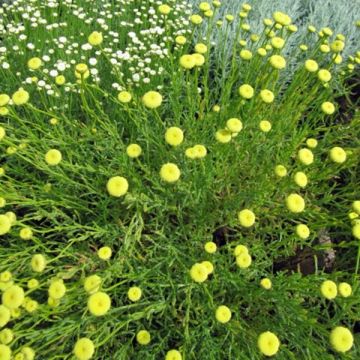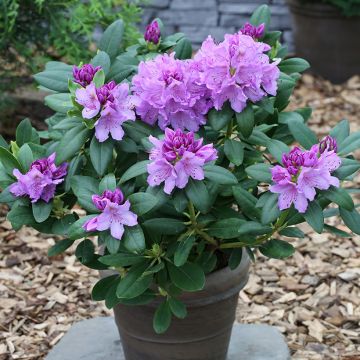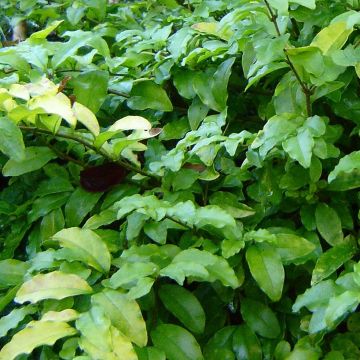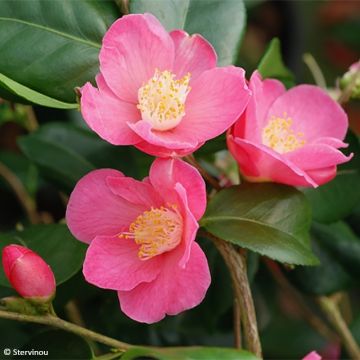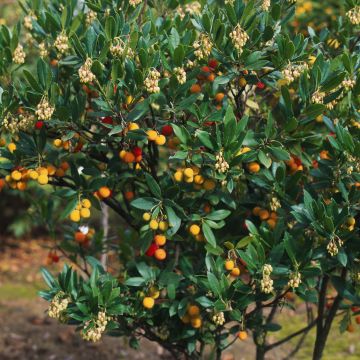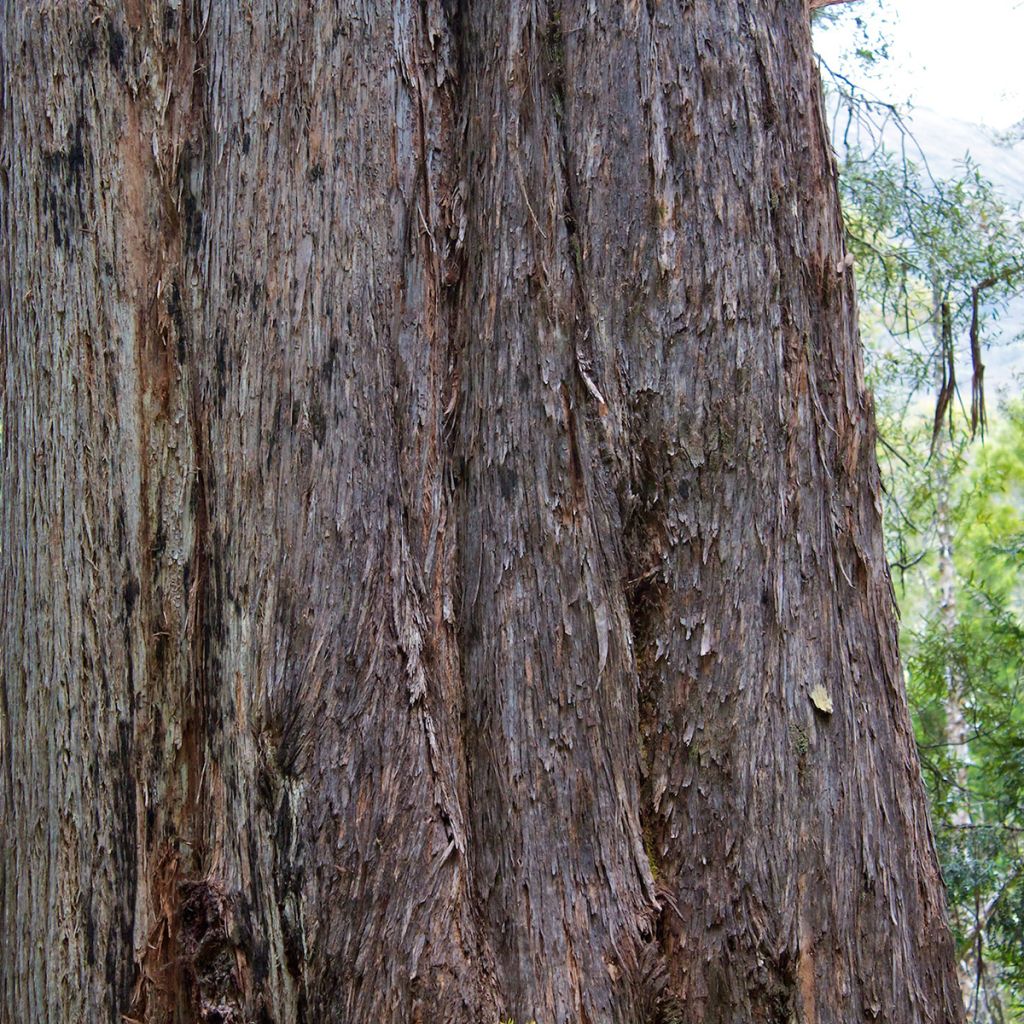

Eucalyptus delegatensis subsp. tasmaniensis
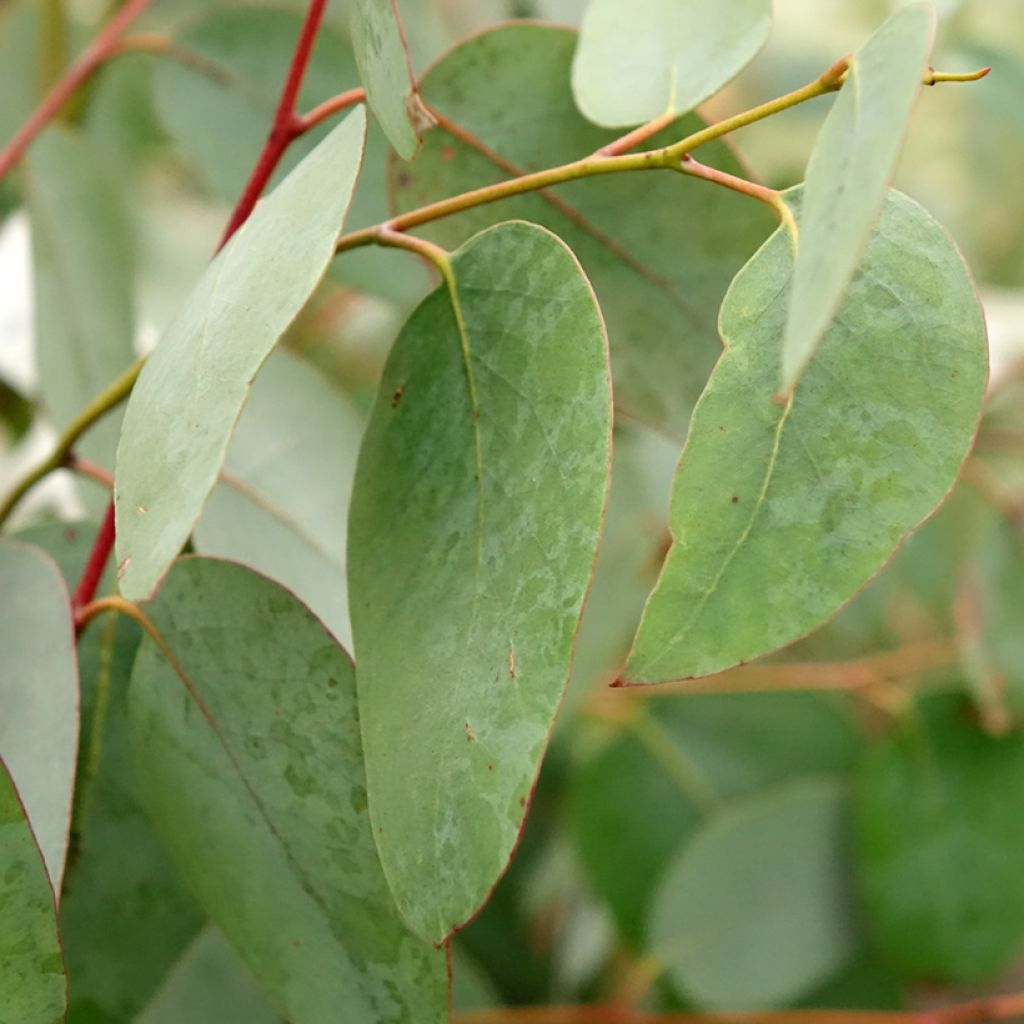

Eucalyptus delegatensis subsp. tasmaniensis
Eucalyptus delegatensis subsp. tasmaniensis
Eucalyptus delegatensis subsp. tasmaniensi
This item cannot be shipped to the selected country
Delivery charge from €5.90
More information
Schedule delivery date,
and select date in basket
This plant carries a 24 months recovery warranty
More information
We guarantee the quality of our plants for a full growing cycle, and will replace at our expense any plant that fails to recover under normal climatic and planting conditions.
From €5.90 for pickup delivery and €6.90 for home delivery
Express home delivery from €8.90.
Does this plant fit my garden?
Set up your Plantfit profile →
Description
Eucalyptus delegatensis subsp. tasmaniensis, synonym of E. risdonii var. elata is one of the tallest Australian trees, endemic to the mountain regions of Tasmania, where the largest known specimen reaches 87 metres (285 feet 5 inches). It stands out with its good cold resistance (down to - 12°C (53.6 °F)), and its ability to withstand harsh climate conditions and adapt to wet soils. This beautiful tree, with a majestic and balanced stature, soars on a very straight trunk, covered with fibrous and stringy bark, with an open and airy canopy and glaucous green foliage. The most beautiful specimens can reach 60 metres (196 feet 11 inches) high, which means choosing a suitable location in a large garden or park. It should be planted in an open space, in full sun, in acid or neutral, moist, well-drained soil, not too dry in summer.
Belonging to the Myrtaceae family, the Eucalyptus delegatensis subsp. tasmaniensis is a subspecies endemic to Tasmania, from all the alpine regions located between 500 and 1000 m (1640 ft 5 in and 3280 ft 10 in), outside the southwest. In these regions, with quite high rainfalls (sup. to 1200 mm/year), it grows on well-drained soils, made up of volcanic rocks and exposed to quite harsh climatic conditions (rain, wind, snow, frost). The denomination subsp. tasmaniensis refers to the state of Tasmania, the distribution area of this subspecies. In Australia, this species is an important source of timber.
This eucalyptus forms a tree, with an erect habit and a straight trunk, relatively devoid of branches. With rapid growth, in its natural habitat, it reaches a height of 40 to 60 m (131 ft 2 in to 196 ft 11 in) and 10 to 20 m (32 ft 10 in to 65 ft 7 in) in width. Under our climates it hardly exceeds 40 m (131 ft 2 in) in height. Unlike many Eucalyptus, this species does not have a lignotuber, a swelling of the collar at ground level (rich in starch) which allows the stump to restart in case of severe frost, fire or severe pruning. When young, it displays glaucous to reddish branches, bearing juvenile foliage, consisting of leaves, with short petioles, opposite, ovate, 3 to 7 cm (1.2 to 2.8 in) long and 2 to 6 cm (0.8 to 2.4 in) wide, pendulous, blue-green. Then, as it develops, the leaves are petiolate, alternate and take a lanceolate to crescent shape, 9 to 20 cm (3.5 to 7.9 in) long for 2 to 4 cm (0.8 to 1.6 in) wide, shiny, a pretty green. The leaves are leathery and slightly aromatic and give off a menthol fragrance when crushed, rich in eucalyptol. As it ages, the thick bark peels off in strips, revealing a smooth underlayer, cream to light grey or yellowish, or even green-yellow. Flowering occurs from January to March, on plants a few years old. The inflorescence, arranged in the leaf axil, is composed of 7 to 15 floral buds gathered in a tight bouquet and blooms into small flowers with numerous cream-white anthers, forming a pompom about 1 cm (0.4 in) in diameter. Rich in nectar, they are very attractive to bees. After flowering, the fruits, called "gumnuts", appear in the form of a woody, globular, truncate capsule, attached to the branch by a short petiole. Of a beautiful whitish-grey colour, they remain attached to the stem for a long time.
The Gum tree delegatensis subsp. tasmaniensis finds a place in a large garden, planted as a specimen in an open space to appreciate the beauty of its bark and the elegance of its foliage. In order to highlight its architectural habit, it is trained on a single trunk. It tolerates both semi-mountain and semi-arid climates in summer, and its resistance to cold will go down to -12°C (10.4 °F). Note that this Eucalyptus, native to the highlands and alpine regions of Australia, tolerates peaty and sandy soils well, even regularly waterlogged, but not swampy. It dislikes asphyxiating soils, too clayey or too chalky. It is therefore comfortable in wet soils, which it has the ability to dry out.
Report an error about the product description
Eucalyptus delegatensis subsp. tasmaniensis in pictures
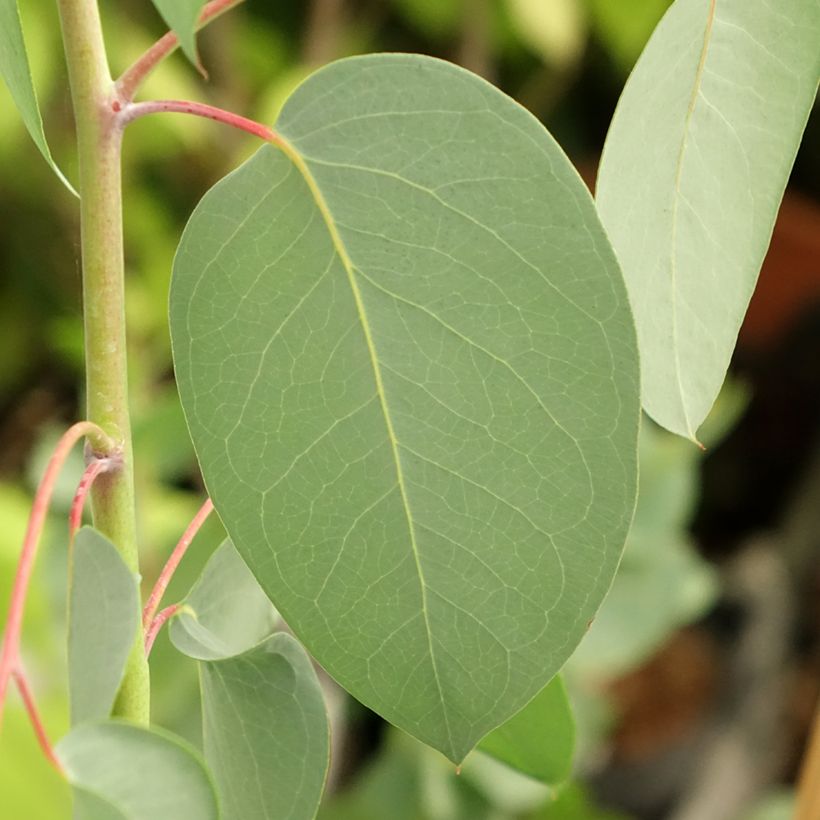

Plant habit
Flowering
Foliage
Botanical data
Eucalyptus
delegatensis subsp. tasmaniensi
Myrtaceae
Eucalyptus risdonii var. elata
Australia
Other Eucalyptus
Planting and care
Eucalyptus delegatensis subsp. tasmaniensis is best planted at the beginning of spring in cold regions, at the beginning of autumn in dry and hot climates in well-prepared soil, not too dry to fresh, in a very sunny situation. Clayey or silty soils, even limestone ones, are tolerated, as long as they are well-draining. A well-established specimen is hardy down to -12 °C (10.4 °F) under these conditions and does not mind snow. Young plants are more sensitive to severe frosts, especially if the frost sets in for several days and the soil is moist. In most regions, you can plant it in open ground, ensuring good drainage by adding coarse sand, pozzolan or non-limestone gravel. Then let nature take its course, the growth is rapid.
For the first two years, regular watering is necessary, then the bush can do without watering in summer. Fertiliser is not recommended. Pruning is not necessary, to let the unique habit of this superb eucalyptus express itself. However, it is well tolerated after flowering. The eucalyptus can be trained on a single trunk, by selecting the one that is best placed and cutting all the others flush.
Young plants take root most easily in open ground. The deep root system of the Eucalyptus does not like to be disturbed. Choose its location carefully, which will be permanent.
The mountain species are useful for their hardiness, but they dislike heatwaves and overly dry soils.
Planting period
Intended location
Care
This item has not been reviewed yet - be the first to leave a review about it.
Evergreen shrubs
Haven't found what you were looking for?
Hardiness is the lowest winter temperature a plant can endure without suffering serious damage or even dying. However, hardiness is affected by location (a sheltered area, such as a patio), protection (winter cover) and soil type (hardiness is improved by well-drained soil).

Photo Sharing Terms & Conditions
In order to encourage gardeners to interact and share their experiences, Promesse de fleurs offers various media enabling content to be uploaded onto its Site - in particular via the ‘Photo sharing’ module.
The User agrees to refrain from:
- Posting any content that is illegal, prejudicial, insulting, racist, inciteful to hatred, revisionist, contrary to public decency, that infringes on privacy or on the privacy rights of third parties, in particular the publicity rights of persons and goods, intellectual property rights, or the right to privacy.
- Submitting content on behalf of a third party;
- Impersonate the identity of a third party and/or publish any personal information about a third party;
In general, the User undertakes to refrain from any unethical behaviour.
All Content (in particular text, comments, files, images, photos, videos, creative works, etc.), which may be subject to property or intellectual property rights, image or other private rights, shall remain the property of the User, subject to the limited rights granted by the terms of the licence granted by Promesse de fleurs as stated below. Users are at liberty to publish or not to publish such Content on the Site, notably via the ‘Photo Sharing’ facility, and accept that this Content shall be made public and freely accessible, notably on the Internet.
Users further acknowledge, undertake to have ,and guarantee that they hold all necessary rights and permissions to publish such material on the Site, in particular with regard to the legislation in force pertaining to any privacy, property, intellectual property, image, or contractual rights, or rights of any other nature. By publishing such Content on the Site, Users acknowledge accepting full liability as publishers of the Content within the meaning of the law, and grant Promesse de fleurs, free of charge, an inclusive, worldwide licence for the said Content for the entire duration of its publication, including all reproduction, representation, up/downloading, displaying, performing, transmission, and storage rights.
Users also grant permission for their name to be linked to the Content and accept that this link may not always be made available.
By engaging in posting material, Users consent to their Content becoming automatically accessible on the Internet, in particular on other sites and/or blogs and/or web pages of the Promesse de fleurs site, including in particular social pages and the Promesse de fleurs catalogue.
Users may secure the removal of entrusted content free of charge by issuing a simple request via our contact form.
The flowering period indicated on our website applies to countries and regions located in USDA zone 8 (France, the United Kingdom, Ireland, the Netherlands, etc.)
It will vary according to where you live:
- In zones 9 to 10 (Italy, Spain, Greece, etc.), flowering will occur about 2 to 4 weeks earlier.
- In zones 6 to 7 (Germany, Poland, Slovenia, and lower mountainous regions), flowering will be delayed by 2 to 3 weeks.
- In zone 5 (Central Europe, Scandinavia), blooming will be delayed by 3 to 5 weeks.
In temperate climates, pruning of spring-flowering shrubs (forsythia, spireas, etc.) should be done just after flowering.
Pruning of summer-flowering shrubs (Indian Lilac, Perovskia, etc.) can be done in winter or spring.
In cold regions as well as with frost-sensitive plants, avoid pruning too early when severe frosts may still occur.
The planting period indicated on our website applies to countries and regions located in USDA zone 8 (France, United Kingdom, Ireland, Netherlands).
It will vary according to where you live:
- In Mediterranean zones (Marseille, Madrid, Milan, etc.), autumn and winter are the best planting periods.
- In continental zones (Strasbourg, Munich, Vienna, etc.), delay planting by 2 to 3 weeks in spring and bring it forward by 2 to 4 weeks in autumn.
- In mountainous regions (the Alps, Pyrenees, Carpathians, etc.), it is best to plant in late spring (May-June) or late summer (August-September).
The harvesting period indicated on our website applies to countries and regions in USDA zone 8 (France, England, Ireland, the Netherlands).
In colder areas (Scandinavia, Poland, Austria...) fruit and vegetable harvests are likely to be delayed by 3-4 weeks.
In warmer areas (Italy, Spain, Greece, etc.), harvesting will probably take place earlier, depending on weather conditions.
The sowing periods indicated on our website apply to countries and regions within USDA Zone 8 (France, UK, Ireland, Netherlands).
In colder areas (Scandinavia, Poland, Austria...), delay any outdoor sowing by 3-4 weeks, or sow under glass.
In warmer climes (Italy, Spain, Greece, etc.), bring outdoor sowing forward by a few weeks.

































